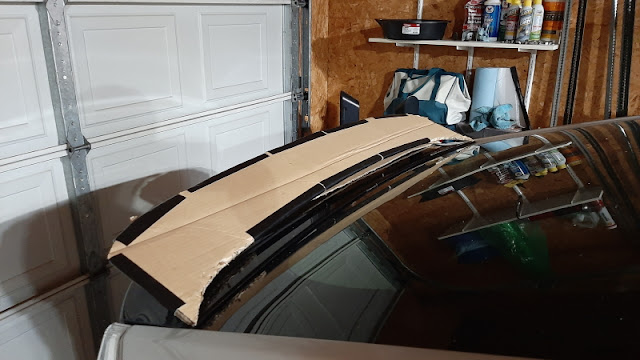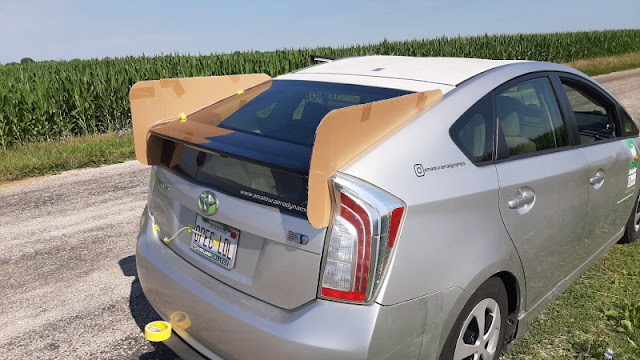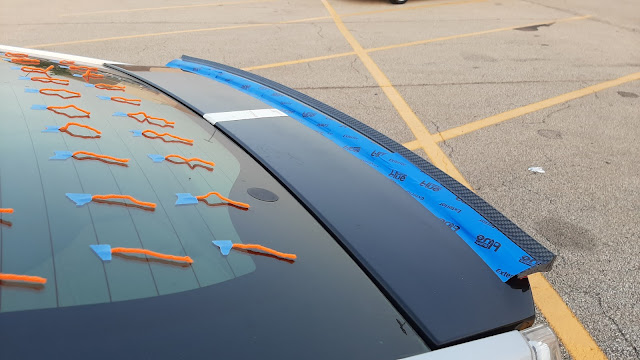Buckle up, this one's long. After hanging around Ecomodder for years, I had a pretty messed up idea of the function of spoilers because of what I had read on that forum. You might too. See, the prevailing theory there—based entirely on posts by one forum member who is widely seen as an aerodynamic “guru”—is that spoilers “reach out” to an ideal “template” profile . By so doing, the theory goes on, a “locked vortex” is captured and the airflow above the spoiler follows the “ideal” template line as the air just ahead of the spoiler recirculates. So, simply position a spoiler and extend it until it touches a template profile overlaid on a side-view image of your car and, voil à ! Lower drag—because the spoiler isolates negative pressure in front, higher pressure in the wake behind it, and the outer flow follows the “template” shape. Someone might want to tell this person that the "perfect match" RS spoiler was, according to Burst himself , supposed to be 15 to 20 mm long...














Comments
Post a Comment